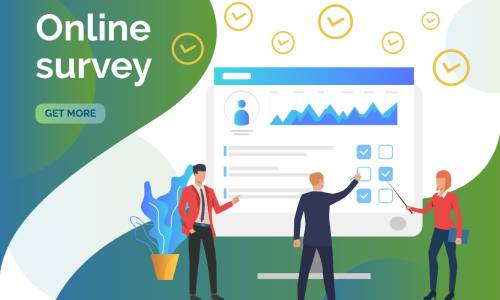The Evolution of Data Collection: From Surveys to IoT and Beyond?
Data collection has come a long way since the days of handwritten surveys and manual record keeping. In today's digital age, the methods and technologies for gathering data have evolved significantly. From traditional surveys to the Internet of Things (IoT) and beyond, this evolution has transformed the way we acquire, process, and leverage information for various purposes. In this blog, we'll explore this fascinating journey through time and technology.
The Age of Surveys
Not too long ago, surveys were the primary means of collecting data. Whether it was door-to-door questionnaires, telephone interviews, or mailed surveys, these methods allowed organizations to gather information directly from individuals. While surveys were effective in many cases, they had their limitations, including:
Limited Scale: Surveys were often constrained by geographical reach and the effort required to administer them.
Potential for Bias: Human error and response bias could skew the collected data.
Time-Consuming: Surveys could be time-consuming, especially when dealing with large populations.
The advent of computers and the internet marked a significant turning point in data collection. Online surveys and digital forms became popular, making it easier to collect and process data. These innovations addressed some of the limitations of traditional surveys:
Broader Reach: Online surveys could reach a global audience, transcending geographical boundaries.
Real-time Data: Data collection and analysis became faster and more efficient.
Reduced Bias: Digital data collection minimized human errors and reduced response bias.
The Rise of IoT
As technology continued to advance, data collection evolved further with the rise of the Internet of Things (IoT). IoT involves connecting everyday objects and devices to the internet, allowing them to collect and transmit data autonomously. This has had a profound impact on various industries:
Smart Cities: IoT sensors monitor traffic, environmental conditions, and infrastructure, enabling cities to optimize services and resources.
Healthcare: Wearable devices and medical sensors collect real-time health data for patients and healthcare providers.
Agriculture: IoT-enabled sensors help farmers monitor soil conditions, crop health, and weather, leading to more efficient farming practices.
Manufacturing: IoT devices in factories track equipment performance, ensuring timely maintenance and minimizing downtime.
Challenges and Considerations
While the evolution of data collection offers numerous benefits, it also presents challenges, including data privacy concerns and security risks. It's crucial for organizations to handle data responsibly and comply with regulations to protect individuals' privacy.
The Future: Beyond IoT
Looking ahead, data collection is poised for further transformation. Emerging technologies like edge computing, artificial intelligence (AI), and 5G connectivity will enhance data collection capabilities. Edge computing allows data to be processed closer to the source, reducing latency and enabling real-time decision-making. AI can analyze vast datasets for valuable insights, and 5G will enable faster, more reliable data transmission.

Conclusion
The evolution of data collection, from surveys to IoT and beyond, reflects the ever-changing landscape of technology and its impact on our ability to gather and utilize information. As we continue to innovate, the possibilities for data collection are boundless, opening new doors for research, decision-making, and improving the way we live and work. However, with these advancements comes the responsibility to use data ethically and protect individuals' privacy in this data-driven world.




Comments
Post a Comment